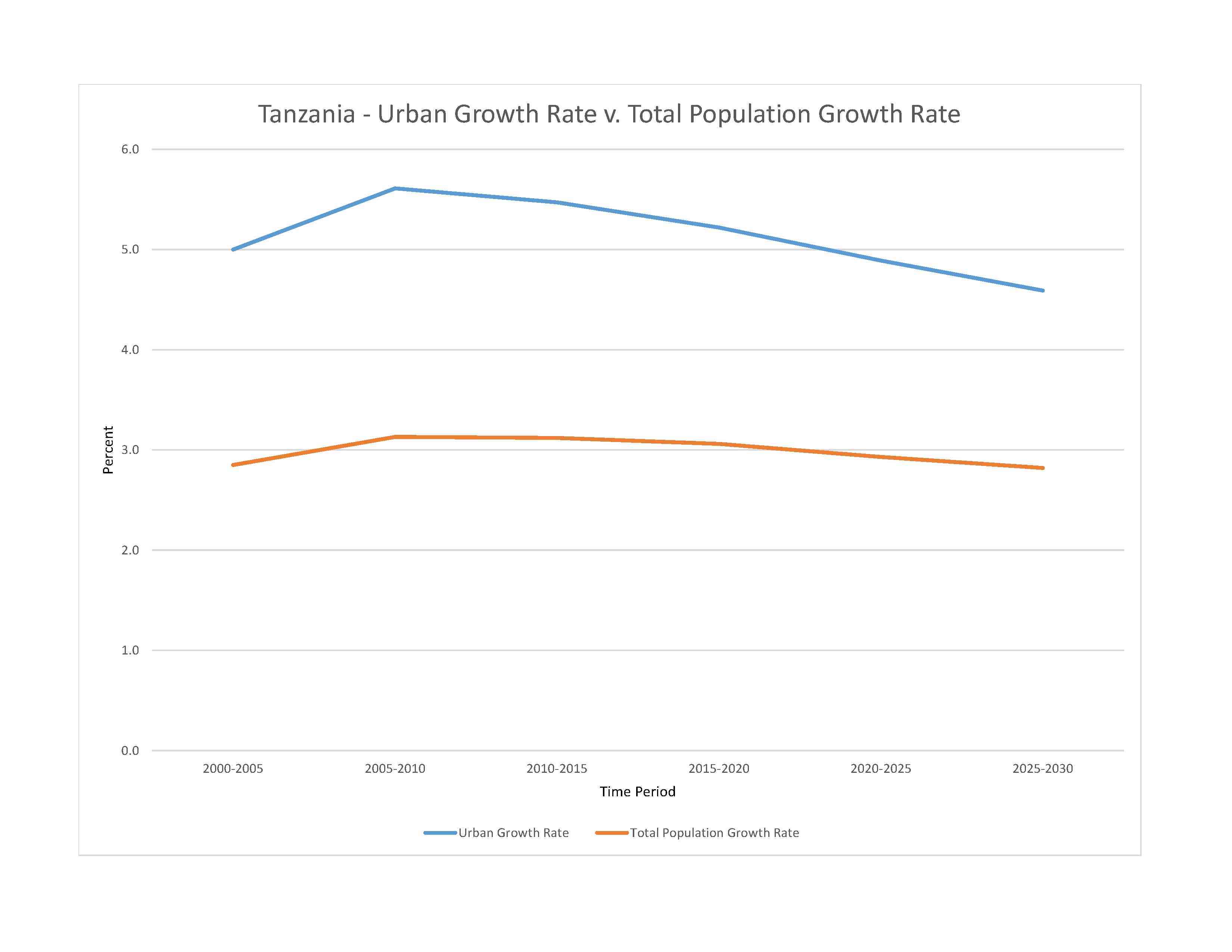
65,642,682 (2023 est.)
noun: Tanzanian(s)
adjective: Tanzanian
mainland - African 99% (of which 95% are Bantu consisting of more than 130 tribes), other 1% (consisting of Asian, European, and Arab); Zanzibar - Arab, African, mixed Arab and African
Kiswahili or Swahili (official), Kiunguja (name for Swahili in Zanzibar), English (official, primary language of commerce, administration, and higher education), Arabic (widely spoken in Zanzibar), many local languages; note - Kiswahili (Swahili) is the mother tongue of the Bantu people living in Zanzibar and nearby coastal Tanzania; although Kiswahili is Bantu in structure and origin, its vocabulary draws on a variety of sources including Arabic and English; it has become the lingua franca of central and eastern Africa; the first language of most people is one of the local languages
major-language sample(s):
The World Factbook, Chanzo cha Lazima Kuhusu Habari ya Msingi. (Kiswahili)
The World Factbook, the indispensable source for basic information.
Kiswahili audio sample:
Christian 63.1%, Muslim 34.1%, folk religion 1.1%, Buddhist
note: Zanzibar is almost entirely Muslim
Tanzania has the largest population in East Africa and the lowest population density; more than a third of the population is urban. Tanzania’s youthful population – over 60% of the population is under 25 as of 2020 – is growing rapidly because of the high total fertility rate of 4.4 children per woman, as of 2022. Progress in reducing the birth rate has stalled, sustaining the country’s nearly 3% annual growth rate. The maternal mortality rate has improved since 2000, yet it remains very high because of early and frequent pregnancies, inadequate maternal health services, and a lack of skilled birth attendants – problems that are worse among poor and rural women. Tanzania has made strides in reducing under-5 and infant mortality rates, but a recent drop in immunization threatens to undermine gains in child health. Malaria is a leading killer of children under 5, while HIV is the main source of adult mortality.
For Tanzania, most migration is internal, rural to urban movement, while some temporary labor migration from towns to plantations takes place seasonally for harvests. Tanzania was Africa’s largest refugee-hosting country for decades, hosting hundreds of thousands of refugees from the Great Lakes region, primarily Burundi, over the last fifty years. However, the assisted repatriation and naturalization of tens of thousands of Burundian refugees between 2002 and 2014 dramatically reduced the refugee population. Tanzania is increasingly a transit country for illegal migrants from the Horn of Africa and the Great Lakes region who are heading to southern Africa for security reasons and/or economic opportunities. Some of these migrants choose to settle in Tanzania.
0-14 years: 41.5% (male 13,765,789/female 13,475,555)
15-64 years: 55.15% (male 18,076,988/female 18,123,677)
65 years and over: 3.35% (2023 est.) (male 933,786/female 1,266,887)
total dependency ratio: 87.7
youth dependency ratio: 81.9
elderly dependency ratio: 5.9
potential support ratio: 20.4 (2021 est.)
total: 18.9 years (2023 est.)
male: 18.7 years
female: 19.2 years
2.75% (2023 est.)
32.9 births/1,000 population (2023 est.)
5 deaths/1,000 population (2023 est.)
-0.4 migrant(s)/1,000 population (2023 est.)
the largest and most populous East African country; population distribution is extremely uneven, but greater population clusters occur in the northern half of country and along the east coast as shown in this 
urban population: 37.4% of total population (2023)
rate of urbanization: 4.89% annual rate of change (2020-25 est.)

262,000 Dodoma (legislative capital) (2018), 7.776 million DAR ES SALAAM (administrative capital), 1.311 million Mwanza, 800,000 Zanzibar (2023)
at birth: 1.03 male(s)/female
0-14 years: 1.02 male(s)/female
15-64 years: 1 male(s)/female
65 years and over: 0.74 male(s)/female
total population: 1 male(s)/female (2023 est.)
19.9 years (2022 est.)
note: data represents median age at first birth among women 15-49
238 deaths/100,000 live births (2020 est.)
total: 30.3 deaths/1,000 live births (2023 est.)
male: 33 deaths/1,000 live births
female: 27.4 deaths/1,000 live births
total population: 70.5 years (2023 est.)
male: 68.7 years
female: 72.3 years
4.33 children born/woman (2023 est.)
2.13 (2023 est.)
38.4% (2015/16)
improved: urban: 95.1% of population
rural: 59.4% of population
total: 72% of population
unimproved: urban: 4.9% of population
rural: 40.6% of population
total: 28% of population (2020 est.)
3.8% of GDP (2020)
0.05 physicians/1,000 population (2018)
0.7 beds/1,000 population
improved: urban: 89.4% of population
rural: 29.2% of population
total: 50.4% of population
unimproved: urban: 10.6% of population
rural: 70.8% of population
total: 49.6% of population (2020 est.)
degree of risk: very high (2023)
food or waterborne diseases: bacterial diarrhea, hepatitis A, and typhoid fever
vectorborne diseases: malaria, dengue fever, Rift Valley fever, and sexually transmitted diseases: HIV/AIDS, hepatitis B (2024)
water contact diseases: schistosomiasis
animal contact diseases: rabies
8.4% (2016)
total: 7.81 liters of pure alcohol (2019 est.)
beer: 0.74 liters of pure alcohol (2019 est.)
wine: 0.09 liters of pure alcohol (2019 est.)
spirits: 0.38 liters of pure alcohol (2019 est.)
other alcohols: 6.6 liters of pure alcohol (2019 est.)
total: 8.7% (2020 est.)
male: 14% (2020 est.)
female: 3.4% (2020 est.)
12.1% (2022)
59.5% (2023 est.)
women married by age 15: 5.2%
women married by age 18: 30.5%
men married by age 18: 3.9% (2016 est.)
3.3% of GDP (2021 est.)
definition: age 15 and over can read and write Kiswahili (Swahili), English, or Arabic
total population: 81.8%
male: 85.5%
female: 78.2% (2021)
total: 9 years
male: 9 years
female: 9 years (2021)
NOTE: The information regarding Tanzania on this page is re-published from the 2024 World Fact Book of the United States Central Intelligence Agency and other sources. No claims are made regarding the accuracy of Tanzania 2024 information contained here. All suggestions for corrections of any errors about Tanzania 2024 should be addressed to the CIA or the source cited on each page.
This page was last modified 04 May 24, Copyright © 2024 ITA all rights reserved.